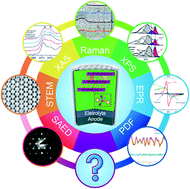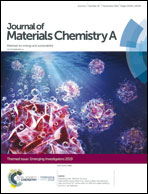Review on anionic redox in sodium-ion batteries
Abstract
Rechargeable sodium-ion batteries (SIBs) have attracted a surge of interest as one of the most promising candidates for large-scale energy storage owing to their abundant natural resources and relatively high economic efficiency. However, the energy density provided by redox from transition metal ions has already been substantially studied and is approaching its limits. It is promising to break through the dilemma from a new aspect. Recently, the transformational anionic redox that has been widely investigated in lithium-rich layered cathodes has also been applied in SIBs; it has turned out to be an effective way to achieve worthwhile specific capacity and peculiar structural evolution. It is noteworthy that the anionic redox reaction can occur in both Na-deficient and Na-rich materials, which is different from that in lithium-ion batteries. This suggests that new electrochemistry could emerge in Na-based materials, providing opportunities to discover advanced materials and new chemistries. In this review, a systematic overlook of the published research on anionic redox in SIBs is provided, along with a discussion on the related theories that explain the mechanism of activating and stabilizing the anionic redox activity. Furthermore, current challenges and possible approaches for improvements are outlined. Further, we have summarized a variety of characterization techniques for investigating the anionic redox process. It is hoped that this review could further the understanding of the anionic redox activity in SIBs and provide an impetus to the development of advanced electrode materials for fabricating high-capacity SIBs that utilize the anionic redox reaction.

- This article is part of the themed collections: Recent Review Articles and Journal of Materials Chemistry A Emerging Investigators


 Please wait while we load your content...
Please wait while we load your content...